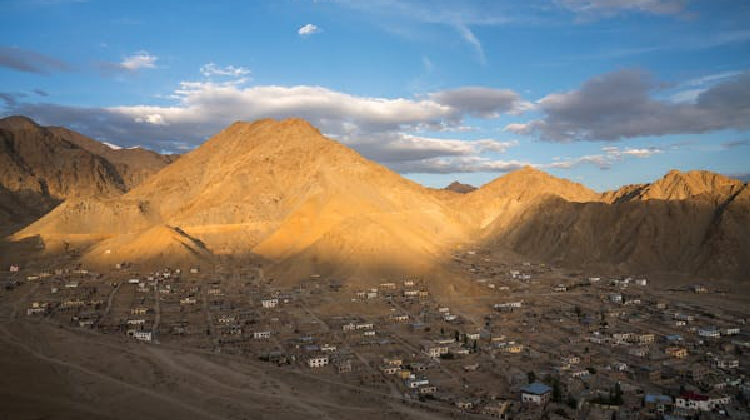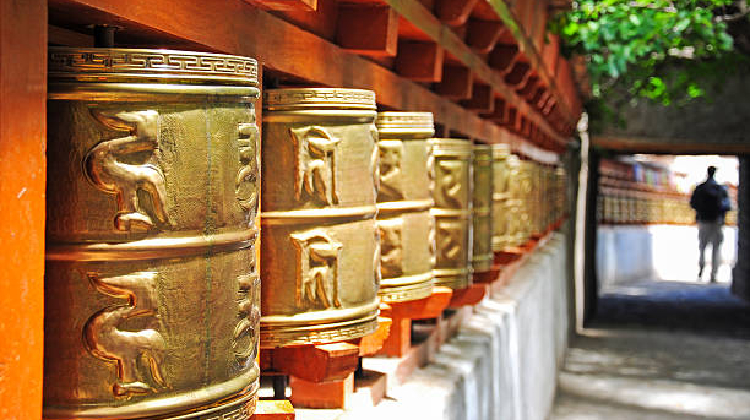Phuktal Monastery, Ladakh
Enjoy mountains of Ladakh in Phuktal Monastery also known as Phuktal Gompa stands as a beacon of spiritual enlightenment and architectural marvel. Its remote location perched Risky on a cliffside adds to its mystique drawing pilgrims and adventurers alike. In this comprehensive guide we unravel the history, architecture, spiritual significance, and travel tips related to Phuktal Monastery of Ladakh inviting you to embark on a journey of discovery.



Traveller Information
- Famous For God Lovers, Nature Lovers
- Fee No Entry Fee
- Visiting Time 8am-1pm & 1.30-6pm
Nearby Attractions
- Zanskar River: Explore the Clear beauty of the Zanskar River known for its turquoise waters and dramatic gorges. River rafting and kayaking are popular activities for adventure enthusiasts.
- Padum: Visit the bustling town of Padum, the administrative center of Zanskar and explore its ancient monasteries, markets, and cultural landmarks.
- Trekking Routes: Embark on multi-day treks to other remote monasteries in the Zanskar region such as Zangla, Karsha, and Stongde.
Ancient Origins of Phuktal Monastery
Phuktal gompa history dates back to the 12th century when it was founded by Gangsem Sherap Sampo a revered Buddhist scholar and saint. Legend has it that Sherap Sampo meditated in a cave near the current site of the monastery leading to the establishment of this Holy sanctuary.
Over the centuries Phuktal Gompa has been a center for Buddhist scholarship and meditation attracting monks and scholars from Tibet, India, and beyond. Despite its remote location and harsh terrain the monastery has thrived, preserving ancient texts, artifacts, and religious practices.
Architectur Phuktal Monastery
The architecture of Phuktal Monastery is a testament to the Design and craftsmanship of ancient Buddhist artisans. Built into the cliffside the monastery complex comprises a central prayer hall or meditation caves, monk quarters, and a library containing rare manuscripts. The main prayer hall known as the Dukhang is adorned with colorful frescoes, intricate wood carvings, and statues of Buddhist deities. The highlight of the monastery is the assembly hall in Gompa where monks gather for prayers, rituals, and philosophical debates.
Spiritual Significance of Phuktal Monastery
Phuktal Gompa holds immense spiritual significance for followers of Tibetan Buddhism. It is believed to be a place of retreat and enlightenment where monks engage in intensive meditation and contemplation.
One of the most revered relics at Phuktal is a statue of Padmasambhava, the Indian mystic who introduced Buddhism to Tibet. The monastery also houses a collection of ancient scriptures, thangkas (religious paintings), and ritual artifacts, offering insights into the rich cultural heritage of Ladakh.
Best Time to Visit
The best time to visit Phuktal Monastery Ladakh is during the summer months from June to September. when the weather is mild and the trails are accessible. Winter months can be harsh with heavy snowfall blocking mountain passes and restricting travel.
How to Reach Phuktal Monastery
Phuktal is located in the remote Zanskar region of Ladakh accessible only by trekking or by helicopter.
- Trekking: The most common way to reach Phuktal is by trekking from the village of Padum in Zanskar. The trek takes approximately 4-5 days and involves crossing high mountain passes and traversing rugged terrain.
- Helicopter: Helicopter services are available from Leh to Padum from where you can trek to Phuktal. However, helicopter services are limited and subject to weather conditions.
Accommodation Options
While Phuktal Monastery itself does not offer accommodation, there are basic guesthouses and camping sites available near the monastery. Trekkers can also stay in homestays in the nearby villages of Purne and Ichar. where they can experience the hospitality of the local Zanskari people.
Travel Tips
- Altitude Sickness: Phuktal is situated at an altitude of about 3,970 meters (13,025 feet) above sea level. It’s essential to acclimatize properly to avoid altitude sickness. Spend a few days in Leh before embarking on the trek to Phuktal.
- Trekking Gear: Trekking to Phuktal requires sturdy hiking boots, warm clothing, and a good quality sleeping bag. It’s also advisable to carry a first aid kit, sunscreen, and plenty of drinking water.
- Respect Local Customs: When visiting the monastery, dress modestly and be respectful of the monks and their practices. Photography inside the monastery may be restricted, so always ask for permission before taking pictures.
Local Cuisine
Indulge in the flavors of Zanskari cuisine by sampling traditional dishes such as thukpa, momos, and butter tea. Local eateries in Padum and nearby villages offer authentic Zanskari meals prepared with locally sourced ingredients.
Conclusion
Phuktal Monastery of Ladakh stands as a testament to the enduring spirit of Tibetan Buddhism and the timeless beauty of the Himalayas. Whether you seek spiritual enlightenment, cultural immersion, or adventure in the great outdoors, Phuktal Gompa promises an unforgettable journey that will leave a lasting impression on your soul.
